Related Research Articles
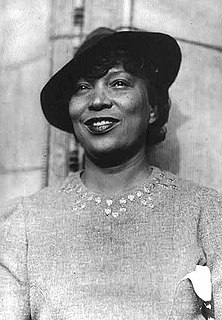
Zora Neale Hurston was an American author, anthropologist, and filmmaker. She portrayed racial struggles in the early-1900s American South and published research on hoodoo. The most popular of her four novels is Their Eyes Were Watching God, published in 1937. She also wrote more than 50 short stories, plays, and essays.
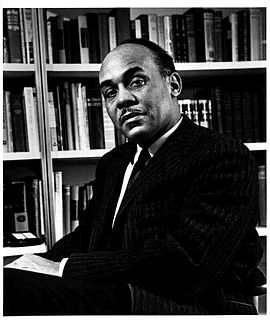
Ralph Waldo Ellison was an American novelist, literary critic, and scholar best known for his novel Invisible Man, which won the National Book Award in 1953. He also wrote Shadow and Act (1964), a collection of political, social, and critical essays, and Going to the Territory (1986). The New York Times dubbed him "among the gods of America's literary Parnassus." A posthumous novel, Juneteenth, was published after being assembled from voluminous notes he left upon his death.
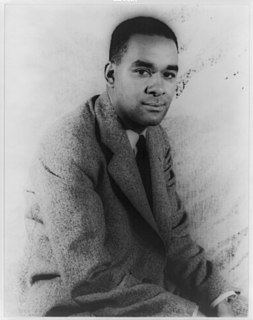
Richard Nathaniel Wright was an American author of novels, short stories, poems, and non-fiction. Much of his literature concerns racial themes, especially related to the plight of African Americans during the late 19th to mid-20th centuries suffering discrimination and violence. Literary critics believe his work helped change race relations in the United States in the mid-20th century.

Native Son (1940) is a novel written by the American author Richard Wright. It tells the story of 20-year-old Bigger Thomas, a black youth living in utter poverty in a poor area on Chicago's South Side in the 1930s.

Anne Inez McCaffrey was an American-Irish writer known for the Dragonriders of Pern science fiction series. She was the first woman to win a Hugo Award for fiction and the first to win a Nebula Award. Her 1978 novel The White Dragon became one of the first science-fiction books to appear on the New York Times Best Seller list.

To Kill a Mockingbird is a novel by the American author Harper Lee. It was published in 1960 and was instantly successful. In the United States, it is widely read in high schools and middle schools. To Kill a Mockingbird has become a classic of modern American literature, winning the Pulitzer Prize. The plot and characters are loosely based on Lee's observations of her family, her neighbors and an event that occurred near her hometown of Monroeville, Alabama, in 1936, when she was ten.

Nellallitea "Nella" Larsen was an American novelist. Working as a nurse and a librarian, she published two novels, Quicksand (1928) and Passing (1929), and a few short stories. Though her literary output was scant, she earned recognition by her contemporaries.

Leslie Marmon Silko is an American writer. A Laguna Pueblo Indian woman, she is one of the key figures in the First Wave of what literary critic Kenneth Lincoln has called the Native American Renaissance.

Frances Ellen Watkins Harper was an American abolitionist, suffragist, poet, teacher, public speaker, and writer. Beginning in 1845, she was one of the first African-American women to be published in the United States.

Ida Bell Wells-Barnett was an American investigative journalist, educator, and early leader in the civil rights movement. She was one of the founders of the National Association for the Advancement of Colored People (NAACP). Over the course of a lifetime dedicated to combating prejudice and violence, and the fight for African-American equality, especially that of women, Wells arguably became the most famous Black woman in America.

Gwendolyn Elizabeth Brooks was an American poet, author, and teacher. Her work often dealt with the personal celebrations and struggles of ordinary people in her community. She won the Pulitzer Prize for Poetry on May 1, 1950, for Annie Allen, making her the first African American to receive a Pulitzer Prize.
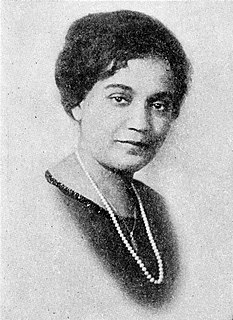
Jessie Redmon Fauset was an African-American editor, poet, essayist, novelist, and educator. Her literary work helped sculpt African-American literature in the 1920s as she focused on portraying a true image of African-American life and history. Her black fictional characters were working professionals which was an inconceivable concept to American society during this time Her story lines related to themes of racial discrimination, "passing", and feminism. From 1919 to 1926, Fauset's position as literary editor of The Crisis, a NAACP magazine, allowed her to contribute to the Harlem Renaissance by promoting literary work that related to the social movements of this era. Through her work as a literary editor and reviewer, she discouraged black writers from lessening the racial qualities of the characters in their work, and encouraged them to write honestly and openly about the African-American race. She wanted a realistic and positive representation of the African-American community in literature that had never before been as prominently displayed. Before and after working on The Crisis, she worked for decades as a French teacher in public schools in Washington, DC, and New York City. She published four novels during the 1920s and 1930s, exploring the lives of the black middle class. She also was the editor and co-author of the African-American children's magazine The Brownies' Book. She is known for discovering and mentoring other African-American writers, including Langston Hughes, Jean Toomer, Countee Cullen, and Claude McKay.

Margaret Walker was an American poet and writer. She was part of the African-American literary movement in Chicago, known as the Chicago Black Renaissance. Her notable works include For My People (1942) which won the Yale Series of Younger Poets Competition, and the novel Jubilee (1966), set in the South during the American Civil War.
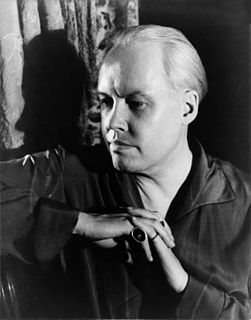
Carl Van Vechten was an American writer and artistic photographer who was a patron of the Harlem Renaissance and the literary executor of Gertrude Stein. He gained fame as a writer, and notoriety as well, for his 1926 novel Nigger Heaven. In his later years, he took up photography and took many portraits of notable people. Although he was married to women for most of his adult life, Van Vechten engaged in numerous homosexual affairs over his lifetime.
African American literature is the body of literature produced in the United States by writers of African descent. It begins with the works of such late 18th-century writers as Phillis Wheatley. Before the high point of slave narratives, African-American literature was dominated by autobiographical spiritual narratives. The genre known as slave narratives in the 19th century were accounts by people who had generally escaped from slavery, about their journeys to freedom and ways they claimed their lives. The Harlem Renaissance of the 1920s was a great period of flowering in literature and the arts, influenced both by writers who came North in the Great Migration and those who were immigrants from Jamaica and other Caribbean islands. African American writers have been recognized by the highest awards, including the Nobel Prize given to Toni Morrison in 1993. Among the themes and issues explored in this literature are the role of African Americans within the larger American society, African-American culture, racism, slavery, and social equality. African-American writing has tended to incorporate oral forms, such as spirituals, sermons, gospel music, blues, or rap.

Jean Toomer was an American poet and novelist commonly associated with the Harlem Renaissance, though he actively resisted the association, and modernism. His reputation stems from his novel Cane (1923), which Toomer wrote during and after a stint as a school principal at a black school in rural Sparta, Georgia. The novel intertwines the stories of six women and includes an apparently autobiographical thread; sociologist Charles S. Johnson called it "the most astonishingly brilliant beginning of any Negro writer of his generation". He resisted being classified as a Negro writer, as he identified as "American". For more than a decade Toomer was an influential follower and representative of the pioneering spiritual teacher G.I. Gurdjieff. Later in life he took up Quakerism.

James Mercer Langston Hughes was an American poet, social activist, novelist, playwright, and columnist from Joplin, Missouri. One of the earliest innovators of the literary art form called jazz poetry, Hughes is best known as a leader of the Harlem Renaissance. He famously wrote about the period that "the Negro was in vogue", which was later paraphrased as "when Harlem was in vogue."
Quicksand is a novel by American author Nella Larsen, first published in 1928. This is her first novel and she completed the first draft quickly. The novel was out of print from the 1930s to the 1970s. Quicksand is a work that explores both cross-cultural and interracial themes. Larsen dedicated the novel to her husband.
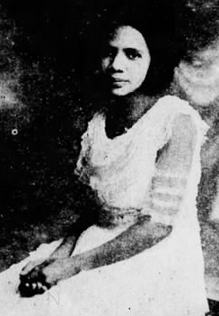
Lodie Maurine Biggs, later Lodie Biggs Moore, was an American bacteriologist, bookseller, and civil rights activist.
Mildred Pitts Walter is an American children's book writer, known for her works featuring African-American protagonists. Walter has written over 20 books for young readers, including fiction and nonfiction. Several of her books have won or been named to the honor list of the Coretta Scott King Awards. A native of Louisiana who later moved to Denver, Walter was inducted into the Colorado Women's Hall of Fame in 1996. She published her autobiography, Something Inside So Strong: Life in Pursuit of Choice, Courage, and Change, in 2019.
References
- ↑ Lorraine Elena Roses; Ruth Elizabeth Randolph (1990). "Wright, Zara (?–?)". Harlem Renaissance and Beyond: Literary Biographies of 100 Black Women Writers, 1900–1945. Harvard University Press. pp. 350–352. ISBN 978-0-674-37255-9.
- ↑ Chicago Defender, December 1920, p. 8.
- Shockley, Ann Allen. Afro-American Women Writers 1746-1933: An Anthology and Critical Guide, New Haven, Connecticut: Meridian Books, 1989. ISBN 0-452-00981-2.